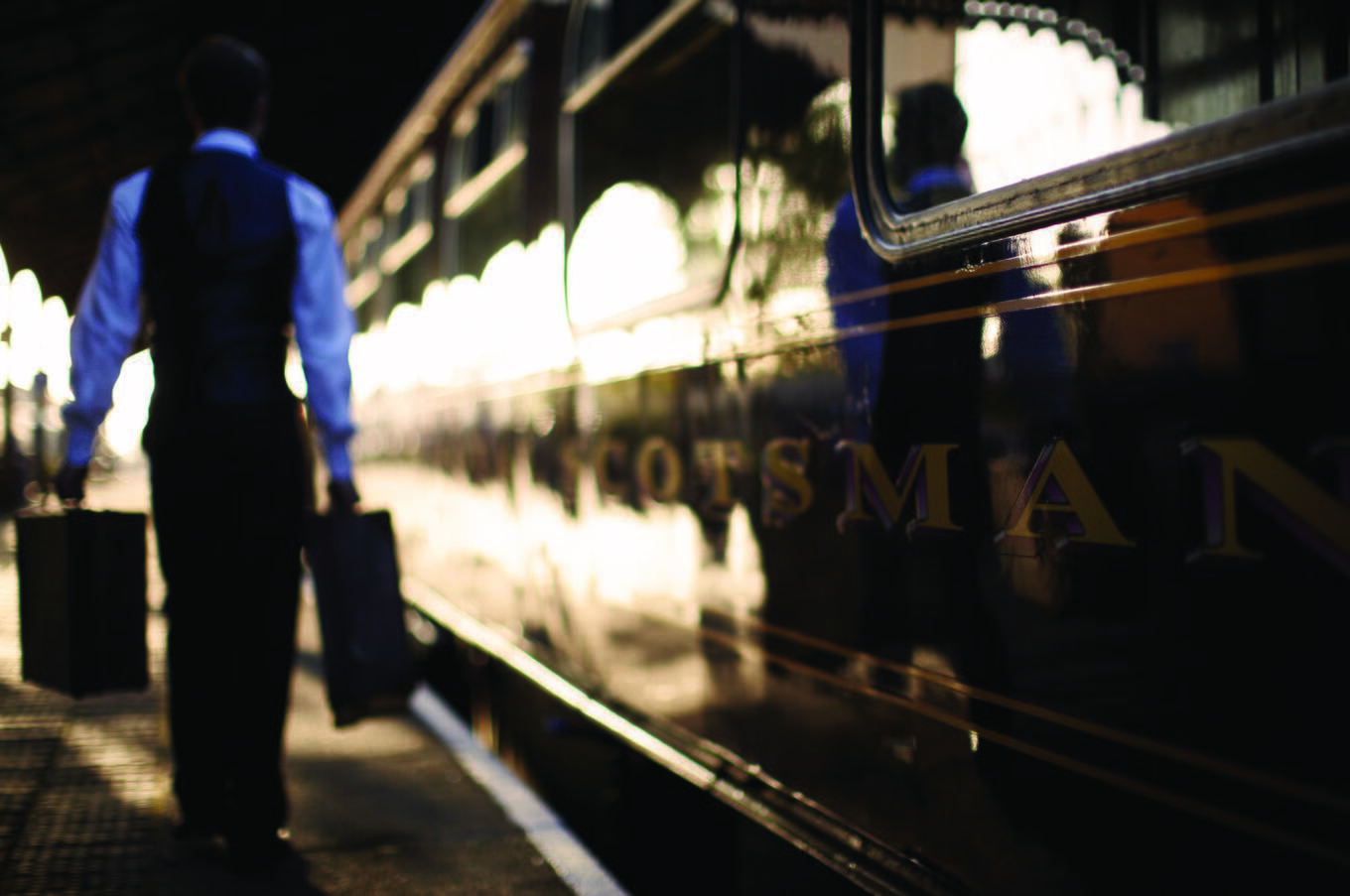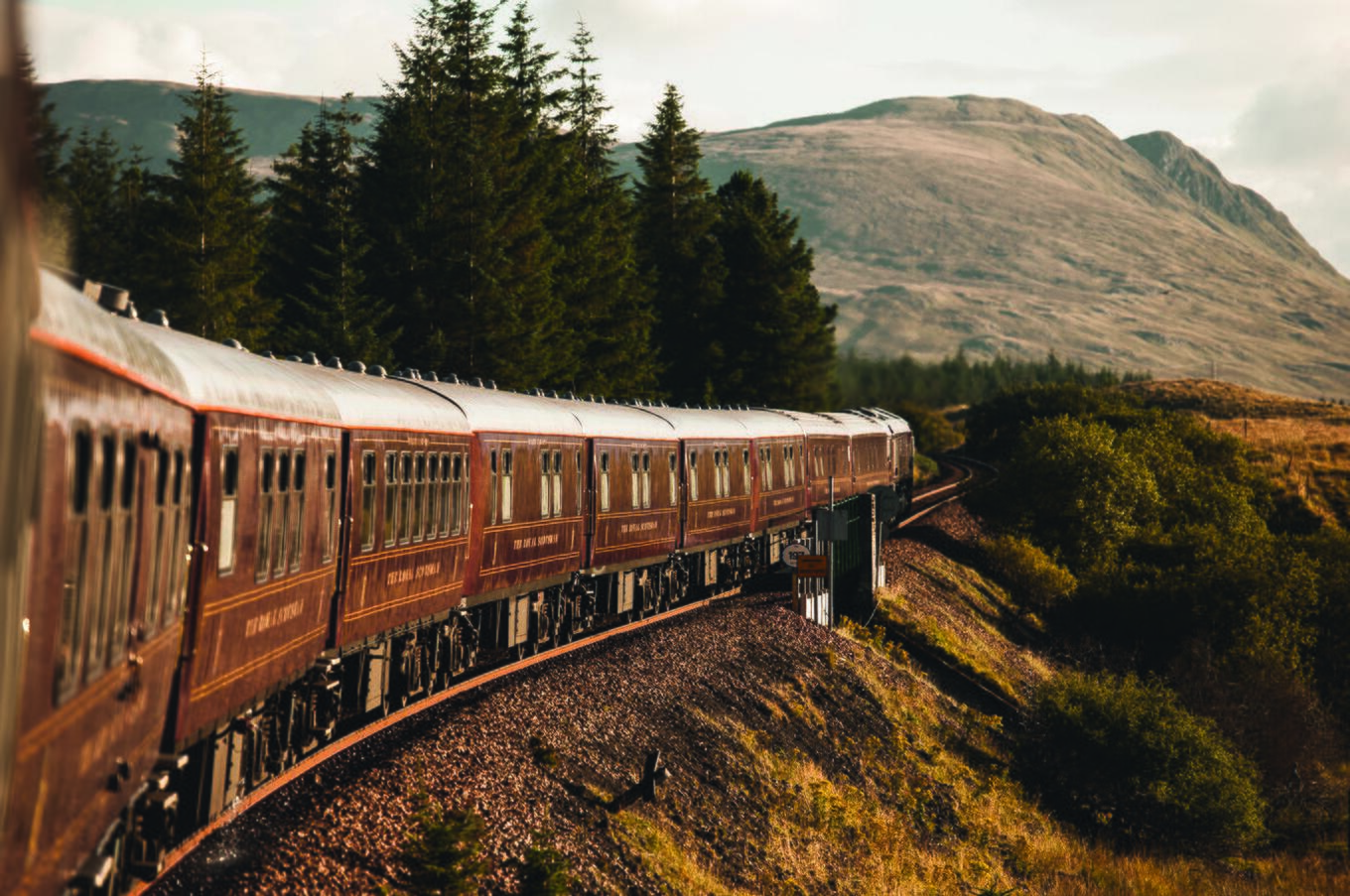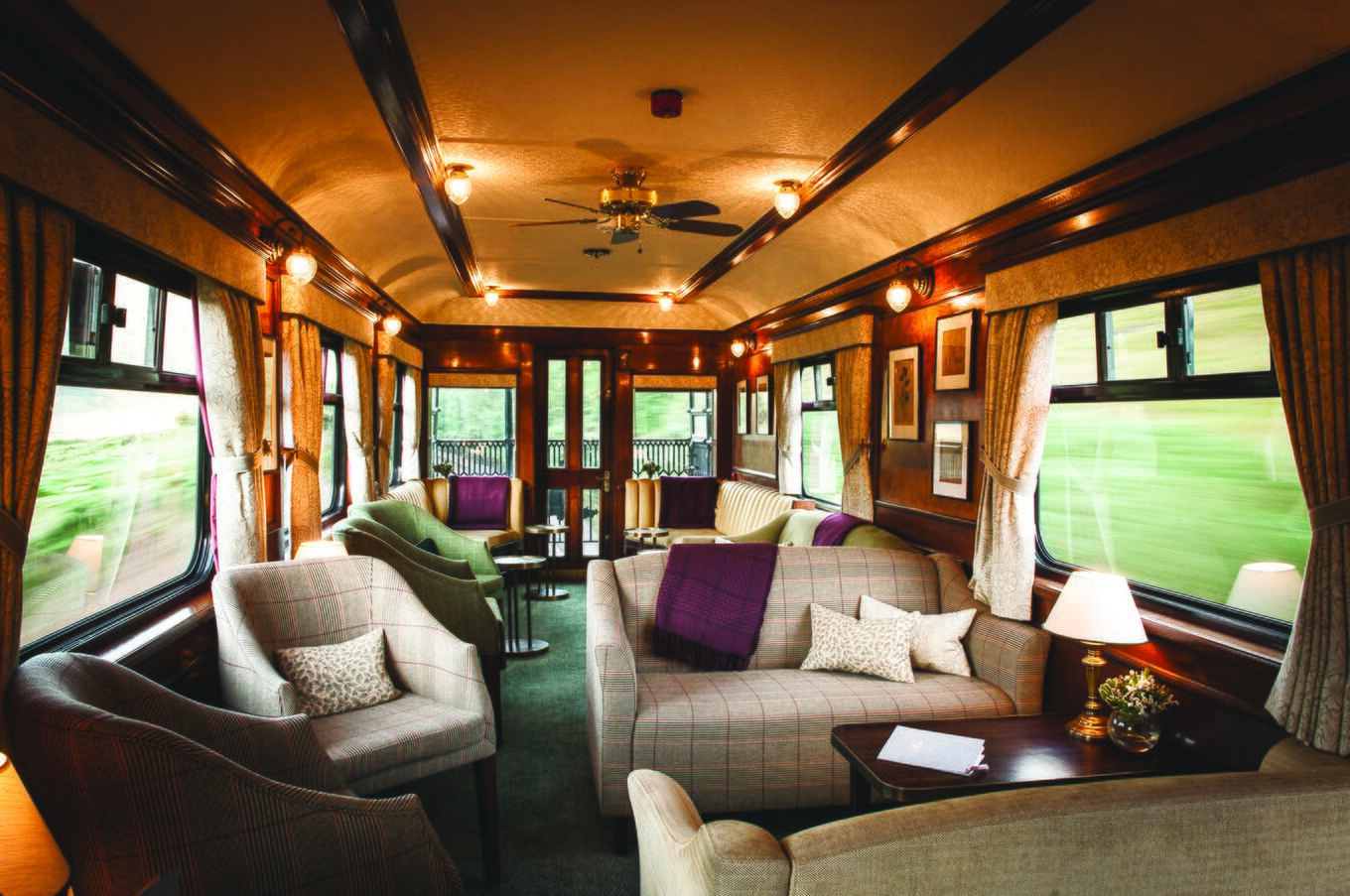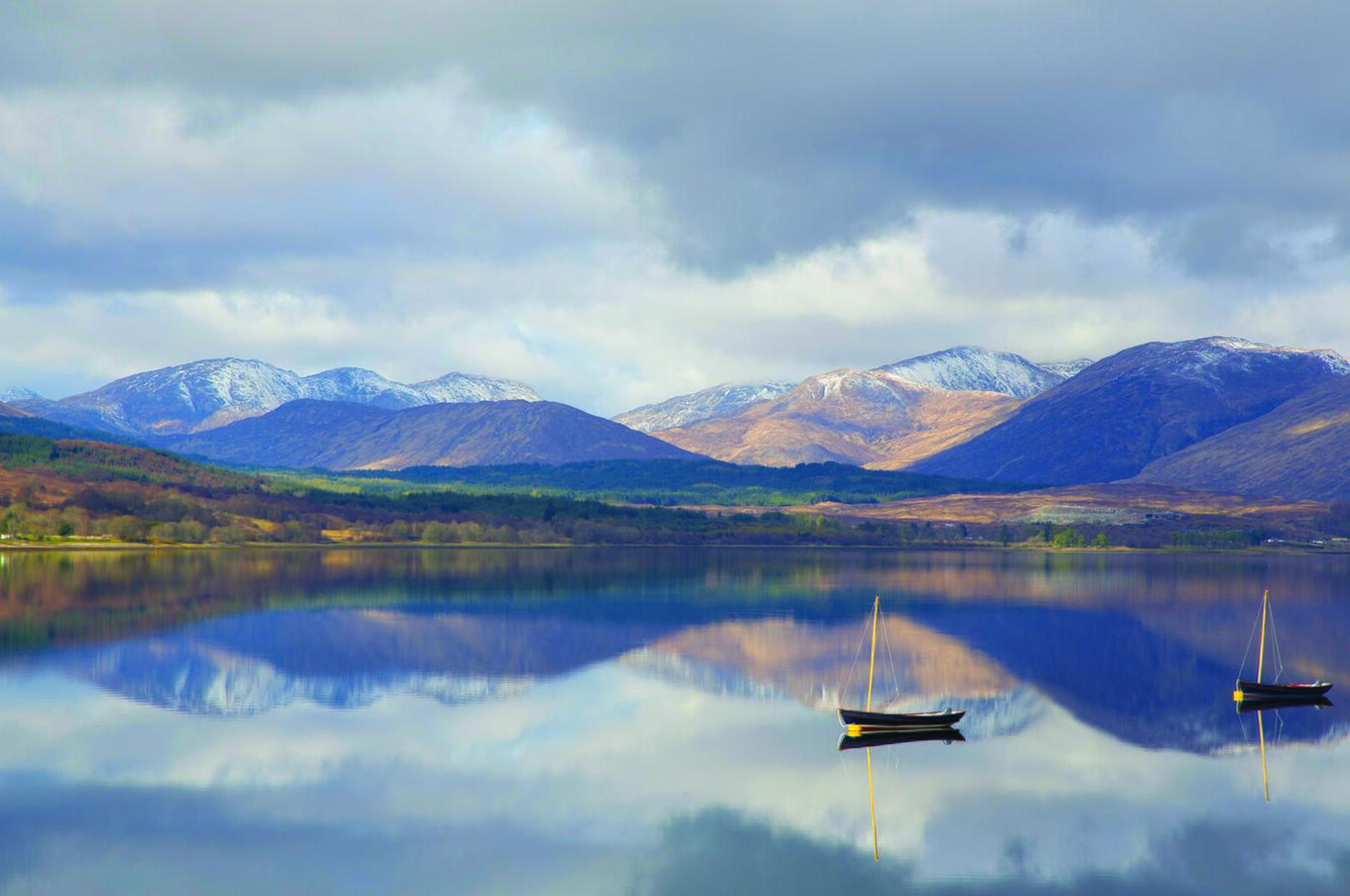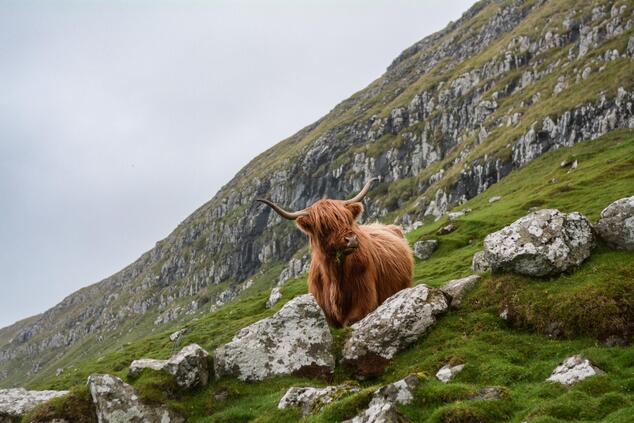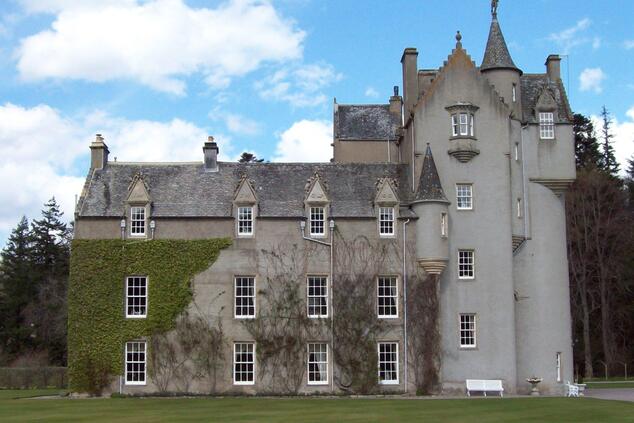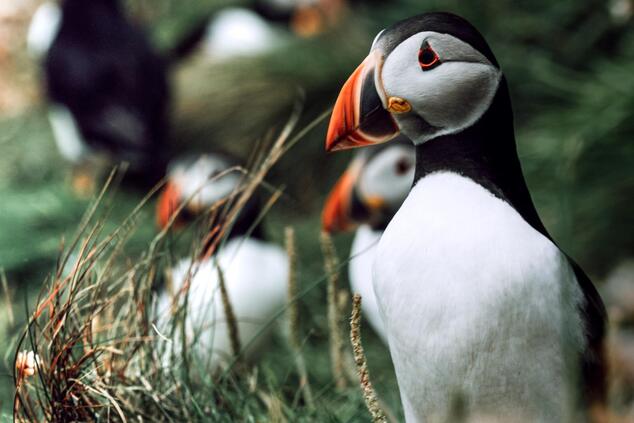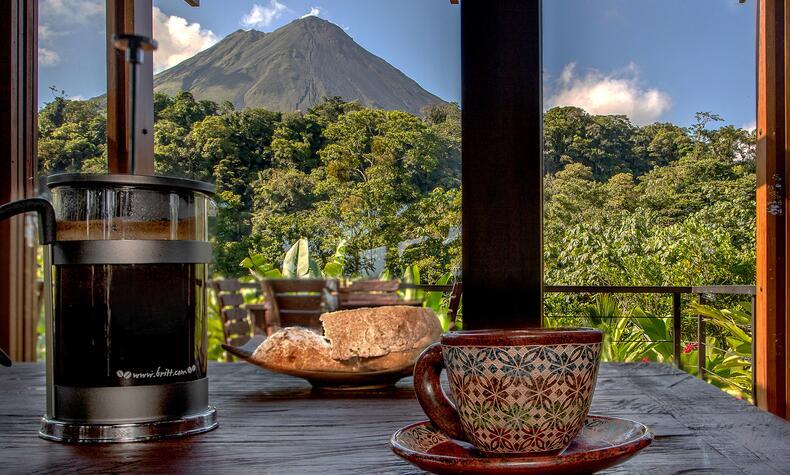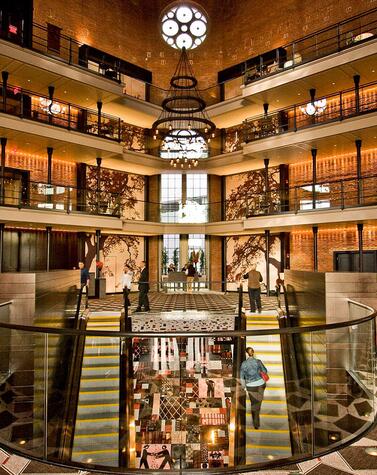Royal Scotsman: Travel through Scotland aboard a luxury train
The ancient inhabitants of Scotland believed that Cailleach Béirre, the Celtic goddess known as "the queen of winter" was responsible for creating the hills and mountainous landscapes characteristic of this region. Some thought that she did so accidentally, stumbling over the earth and creating large ruts, while others claimed that she did it completely intentionally, carving them with her hammer to create stepping stones for her to move about in as she pleased.
The truth is that the romantic landscape of the "Highlands" or Scottish Highlands, leaves anyone impressed. Its green, abrupt and mysterious nature is characterized by cliffs, moors dotted with heather, mountains, ruined castles, cottages with thatched roofs, red-headed cows, and enchanted lakes that have made this region an inspiration for artists and writers and the setting for such legendary films as "The Immortals", "Braveheart", "Harry Potter", or the "Outlander" series, among others.

Robert Burns, Scotland's most celebrated poet, born in Edinburgh in 1721, said in a poem: "Wherever I wander, I shall always love the Highland hills". We can travel and enjoy Scotland in many ways, but perhaps one of the most suited to the very pace of the landscape and life of the Scots is by train, but not just any train.
Aboard the Belmond Royal Scotsman, a luxury train with carriages decorated in the purest Edwardian style, you get to recreate the exclusive atmosphere of a warm and comfortable five-star Scottish country house. Traveling on the Royal Scotsman we can discover the best of Scotland on tours of 2 to 7 nights (between April and October) through the most beautiful landscapes of this region. From routes through the Highlands to the malt whisky route, visiting some of the best distilleries in the country, or the route of the Scottish clans and castles.


This luxury train consists of 9 mahogany-clad carriages that carry a maximum of 36 passengers and create a real palace on wheels. Carriages converted into elegant lounges or suites, an open observation car, located at the rear, from which to contemplate the panoramic views that this trip offers us and even a Spa Car made of sustainable wood from Scotland and the Cotswolds, which offers holistic treatments made from organic products of the prestigious brand Bamford.
All routes depart from the city of Edinburgh but, during the tour, stops are made to visit castles, gardens, mansions, historic sites, and distilleries. There is also the option of enjoying activities such as fishing, clay pigeon shooting, golf, woodland walks, boat trips, and whisky tasting, among others.


Route through the classical splendor of Scotland
One of our favorite routes aboard the Royal Scotsman is the 4-night journey through some of the region's most beautiful and iconic scenery. Departing from Waverley Station in Edinburgh, the train heads north across the famous Forth Railway Bridge, considered one of the great railway advances of the Victorian era.
The train continues along the east coast and through towns such as Arbroath, Montrose, and Aberdeeen, to Keith. The next day, it travels along one of the most beautiful scenic routes in Great Britain towards Kyle of Lochalsh and the mythical Isle of Skye. There we can observe colonies of seals and puffins and spectacular castles such as Eilean Donan Castle.
There will be time to visit an early 19th-century whisky distillery before departing for Inverness, where a visit to Ballindalloch Castle, known as the "Pearl of the North" and which includes among its treasures a collection of 17th-century Spanish paintings, is a must.
- The Highland cow is a breed native to that area of Scotland, characterized by its long, reddish-colored coat. Photo: Eric Welch. —
- Eilean Donan Castle is a 13th century fortress, located on an island, which has been the setting for numerous famous film shoots such as "The Immortals" in 1986. Photo: Diliff. —
- Like most Scottish castles, Ballindaloch Castle has its own ghost known as "The Green Lady." —
- Puffin colonies can be seen on a simple boat ride around the Isle of Skye. Photo: Bryan Walker.
Another highlight of this route is a visit to Cairngorms National Park, which boasts one of the world's most important forests of Caledonian pine, a species of tree that, in ancient times, covered much of Scotland.
Before returning to Edinburgh, via Dundee, we'll discover the legends and novel-worthy stories hidden in Glamis Castle, a perfectly preserved fairy-tale castle that was the childhood and youthful home of England's Queen Mother.



One of the hallmarks of Scottish identity are the so-called "Clans". A Scottish clan is a social group structured by kinship. Clans provide a sense of common identity by descent to their members, and today they have an official structure.
Each clan has its own coat of arms, and most clans have their own patterns and designs in the famous plaid known as tartan, which is used to make the famous kilts and other garments.
The modern image of the clans, each with its own tartan and specific territories, was pioneered by the early 19th-century Scottish author Sir Walter Scott, who is considered the father of the historical novel.


